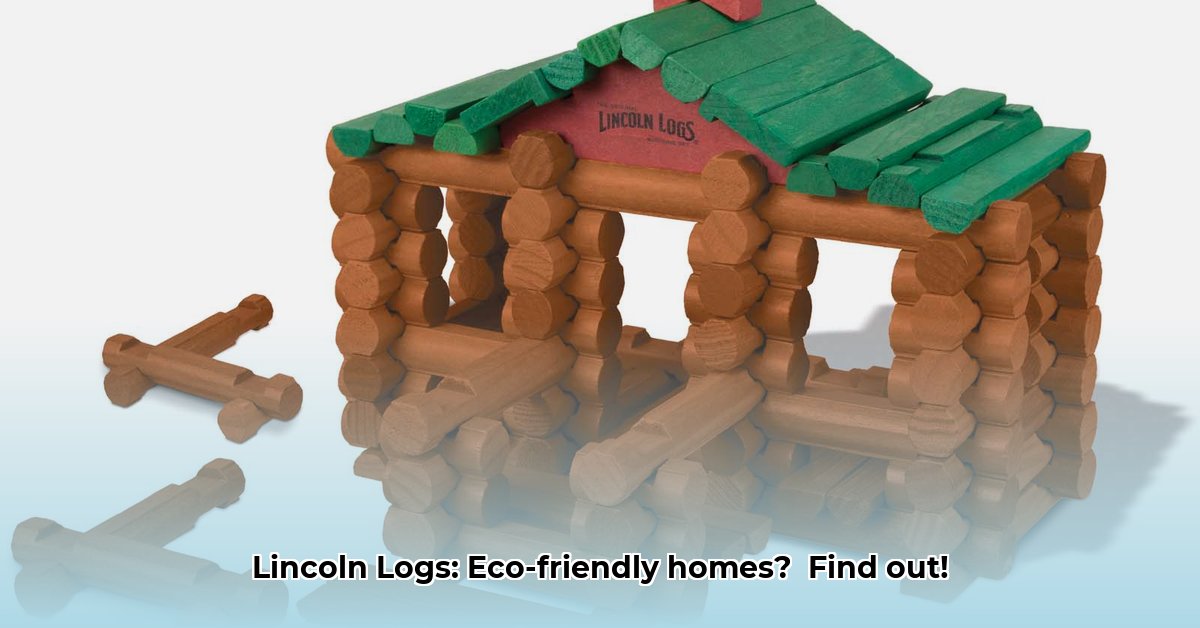
Remember the childhood joy of building towering castles with Lincoln Logs? Now, imagine using that same principle to construct eco-friendly homes. This isn't just whimsical nostalgia; it's a serious exploration of sustainable building materials with surprising potential. Can a childhood toy truly contribute to a greener future in construction? Let's investigate.
The Promise and Peril of Wooden Construction
The initial allure of Lincoln Logs in sustainable building is undeniable: wood. It's a renewable resource, capable of continuous regrowth, and trees naturally sequester atmospheric carbon dioxide, acting as miniature carbon-capture systems. Using wood in construction could, therefore, lessen our carbon footprint. But the reality is far more nuanced. Sustainable building isn't just about the material; it's about the entire lifecycle, from forest to finished home.
A key question arises: How sustainable is the source of the wood? Responsible harvesting, ensuring forest health and long-term productivity, is paramount. Certifications like those from the Forest Stewardship Council (FSC) https://www.fsc.org/ provide crucial verification of sustainable forestry practices. Using FSC-certified wood significantly reduces negative environmental impacts.
Furthermore, the manufacturing process needs scrutiny. Is excessive energy consumed in milling the wood? Are harsh chemicals employed in treatment? These factors heavily influence the material's overall environmental impact. Transportation distance also plays a role; locally sourced logs significantly reduce the carbon footprint associated with shipping.
Currently, a significant hurdle exists: a lack of readily available, detailed information regarding the specific sourcing and manufacturing of Lincoln Logs intended for construction. This opacity makes a precise environmental impact assessment challenging. Increased transparency from manufacturers is crucial to fully evaluate their sustainability.
A Critical Assessment: Weighing the Pros and Cons
While the inherent qualities of wood offer substantial advantages, the specifics of sourcing and manufacturing significantly impact the overall sustainability. Using Lincoln Logs for construction holds promise, but this potential hinges on responsible sourcing and transparent practices.
To unlock the full potential of this intriguing building material, several critical steps are necessary:
FSC Certification: Obtaining and maintaining FSC certification is non-negotiable, signifying a commitment to responsible forestry and building consumer trust.
Complete Transparency: Openly disclosing detailed information about wood sourcing, manufacturing, and transportation is essential for independent assessment and accountability.
Investing in R&D: Research and development focused on sustainable wood treatments and energy-efficient manufacturing processes are vital for minimizing environmental impact. This could involve exploring less energy-intensive methods or identifying safer chemical alternatives.
Promoting Sustainable Building Practices: Educating builders, contractors, and homeowners about the efficient and sustainable use of Lincoln Logs is crucial for maximizing the material's long-term benefits. Clear guidelines for construction, maintenance, and energy efficiency would significantly improve the overall sustainability.
Consumers play a crucial role too. By demanding transparency and actively seeking products from companies committed to sustainability, we influence the market and support eco-conscious businesses.
The Path Forward: A Collaborative Effort
Lincoln Logs represent a compelling case study in sustainable building. The potential is significant, but its realization depends on company commitment, consumer demand, and supportive regulations. Only through greater data availability, improved transparency, and a dedication to sustainable practices can we definitively determine if Lincoln Logs can truly become a major player in sustainable construction. The story, however, is far from over.
Key Takeaways:
- Sustainable timber sourcing, verified by certifications like FSC, is paramount for eco-friendly Lincoln Log homes.
- Energy-efficient designs and construction techniques minimize the overall environmental footprint.
- Transparency in sourcing and manufacturing is crucial for accurate assessment of environmental impact.